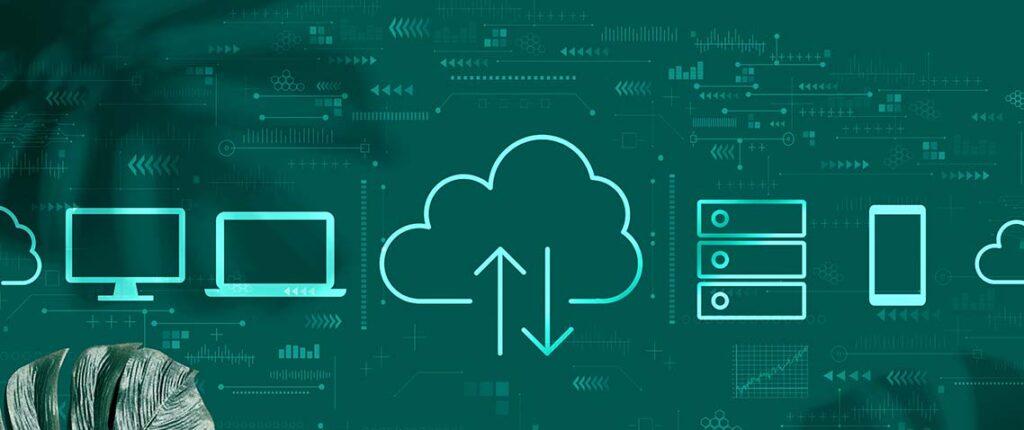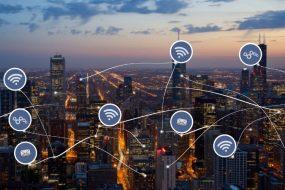
You might have asked yourself, “Which approach aligns more with my sustainability goals: energy-efficient hardware or cloud services?” Or, “What is the environmental impact of using energy-efficient devices compared to cloud platforms?”
To answer these questions, we will take a closer look at both of these concepts. By comparing Green Computing and Cloud Computing, we will be able to make choices that save energy, reduce costs, and make our operations more efficient. Plus, we will be better positioned to contribute to a healthier environment.
Let’s explore how understanding the distinctions between Green Computing and Cloud Computing can lead to practical advantages for our businesses.
What is Green Computing?
The tech world makes up around 1.8% to 3.9% of the world’s greenhouse gas pollution. Plus, data centers use up 3% of the world’s energy every year, which is double what it was ten years ago.
Thus, Green Computing, also called green IT or sustainable IT, is a concept all about making technology friendlier to our environment. When we talk about Green Computing, we talk about a set of essential rules and ideas. These rules help us use technology in a way that doesn’t harm our planet. You know how turning off the lights when you leave a room saves electricity? Well, it’s similar in the tech world. Green Computing encourages us to use only the energy we really need, not waste it.
Another important thing is ensuring the things we use in technology last as long as possible. Imagine if you had to buy a new car every week – that’s not good for the environment or your wallet. Similarly, in Green Computing, we want our appliances and gadgets to last a long time so we don’t create too much waste. In a nutshell, Green Computing is like a friendly reminder to use technology in ways that help our planet by saving energy and making things last.
HP’s eco-friendly PC revolution
Let’s turn our attention to the famous technology producer, HP. In the realm of Green Computing, HP and its suppliers took a notable stride in 2022. They collectively acquired 1.1 million MWh of renewable electricity attribute certificates, which effectively encompassed China’s primary high-impact final assembly facilities.
HP’s latest Dragonfly and Elite 1000 Series PCs showcase HP’s commitment to Green Computing. These devices incorporate 90% recycled magnesium and 65% ocean-bound plastic in their construction, along with bio-circular feedstock like used cooking oil to reduce CO2 emissions. The products are EPEAT® Gold registered in many countries, ENERGY STAR® certified, and TCO Certified. Packaging is sustainably sourced, and around 91% of units are shipped in eco-friendly molded fiber or hybrid foam/fiber packaging.
What is Cloud Computing?
Cloud Computing is a way of using and storing data, software, and services on the internet instead of on your own computer or local servers. It’s like renting space and power on the internet to run applications, store files, or process data. Instead of needing powerful hardware on your own, you can use the resources of big data centers worldwide. This lets you access your stuff from anywhere, as long as you have an internet connection. It’s like having a virtual computer that you can use whenever you need it without worrying about the technical details.
Besides, moving to Cloud helps sustainability a lot. Cloud Computing optimizes resource usage through shared infrastructure, reducing energy consumption and minimizing electronic waste. Flexible scaling, remote work capabilities, and data center location choices that favor renewable energy contribute to a more eco-friendly technology landscape, helping decrease carbon emissions and support efficient resource usage.
Sustainable cloud: Netflix and AWS powering green innovation
Netflix, the world’s top internet TV network, serves 200 million members across 190+ countries with 125 million daily viewing hours. Using Amazon Web Services (AWS), Netflix achieves comprehensive cloud-powered operations.
As displayed by Netflix’s collaboration with AWS, cloud computing maintains sustainability by optimizing resource allocation, reducing hardware waste, and enabling energy-efficient data centers. The flexibility to scale resources based on demand minimizes overconsumption, while cloud analytics inform efficient content creation. Global distribution efficiency and reduced hardware management contribute to Netflix’s eco-friendly innovation.
Key differences between Green Computing and Cloud Computing
Green Computing
- Green Computing strongly emphasizes energy-efficient hardware, aiming to create devices that consume less power and produce minimal waste;
- Green Computing prioritizes local processing, where tasks are executed on individual devices, aiming for energy-efficient hardware and reduced waste;
- Green Computing lowers the ecological impact of businesses by promoting responsible energy consumption. This approach assists businesses in effectively managing energy usage while maintaining operations on an energy-efficient regimen.
Cloud computing
- Cloud Computing focuses on optimizing data center infrastructure, aiming to enhance the efficiency of resource allocation and usage;
- On the other hand, Cloud Computing relies on remote processing, using centralized data centers with substantial computing power to handle tasks;
- Cloud Computing contributes to businesses’ growth, helping them attain their goals while enhancing revenue. This is achieved through accelerated communication, fortified network collaboration, and optimized usage of current resources, fostering overall efficiency and success.
How Green Computing and Cloud Computing can coexist?
Green computing and cloud computing can coexist in a complementary and mutually beneficial manner. Green computing, also known as sustainable computing, focuses on reducing the environmental impact of computing systems and operations. Cloud computing, on the other hand, provides scalable and efficient ways to deliver computing resources and services. Thus, Green Computing and Cloud Computing both align well with the goals of minimizing environmental impact. Here’s how they can work together:
- Resource consolidation: Cloud providers often employ resource consolidation strategies, which involve running multiple virtual servers on a single physical server. This leads to better resource usage and reduced energy consumption, aligning with green computing principles.
- Energy efficiency: Cloud data centers are designed with energy efficiency in mind. They incorporate technologies such as advanced cooling systems, efficient power distribution, and server optimization to minimize energy consumption. For example, through its Azure cloud platform, Microsoft aims to be carbon-negative by 2030 and has implemented various energy-efficient technologies in its data centers.
- Scaling and efficiency: Cloud services enable businesses to scale their computing resources as needed. This scalability avoids overprovisioning of hardware, reducing energy waste associated with idle or underutilized resources.
- Data center location: Cloud providers can strategically choose data center locations with access to renewable energy sources, further reducing the carbon footprint of their operations. For example, Salesforce’s net-zero cloud initiative emphasizes using 100% renewable energy for its data centers and cloud infrastructure.
- Dynamic workloads: Cloud platforms allow workloads to be distributed across servers based on demand, consolidating workloads on fewer servers during periods of lower demand, which reduces power consumption.
- Server virtualization: Virtualization, a key component of cloud computing, allows multiple virtual machines to run on a single physical server. This optimizes hardware utilization and contributes to energy efficiency.
- Remote access and collaboration: Cloud-based applications enable remote access and collaboration, reducing the need for physical infrastructure, thus contributing to environmental conservation.
- Pay-as-You-Go Model: The pay-as-you-go model of cloud computing encourages resource optimization and minimizes wastage, as users only pay for the resources they actually use.
Lots of forward-thinking companies have successfully combined Green Computing principles with Cloud Computing services to achieve sustainable and efficient operations. This harmonious integration has not only allowed these companies to reduce their environmental impact but has also bolstered their operational efficiency, demonstrating the powerful potential of aligning technological innovation with ecological responsibility.







